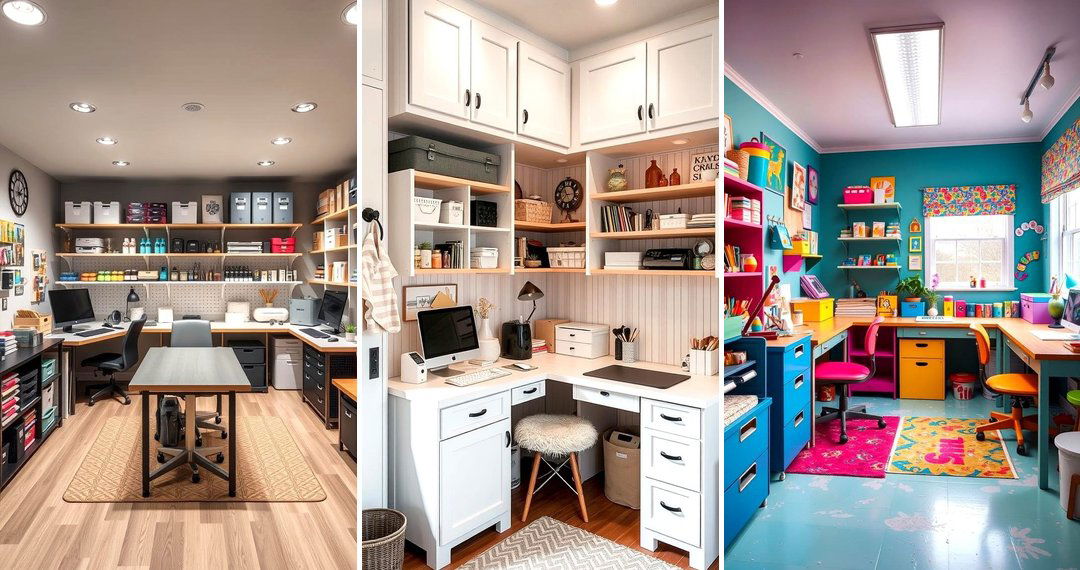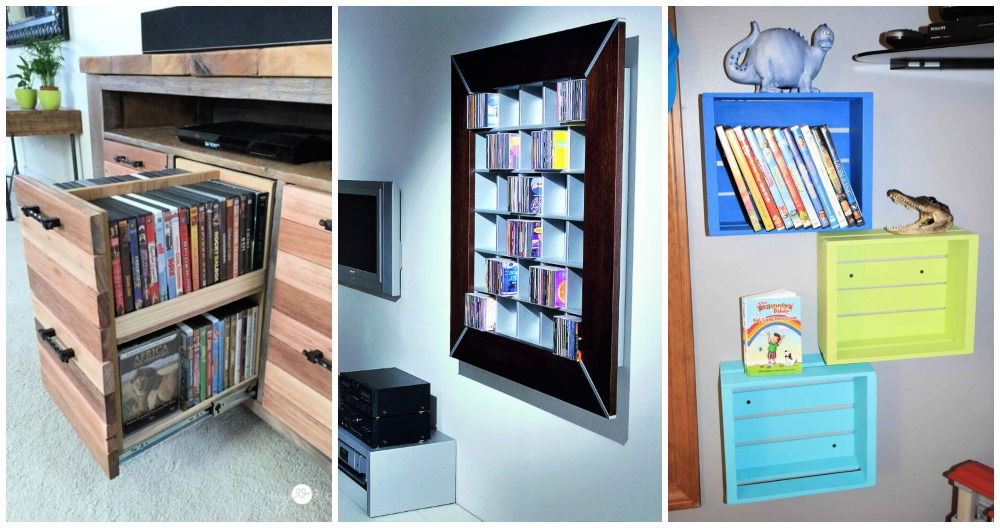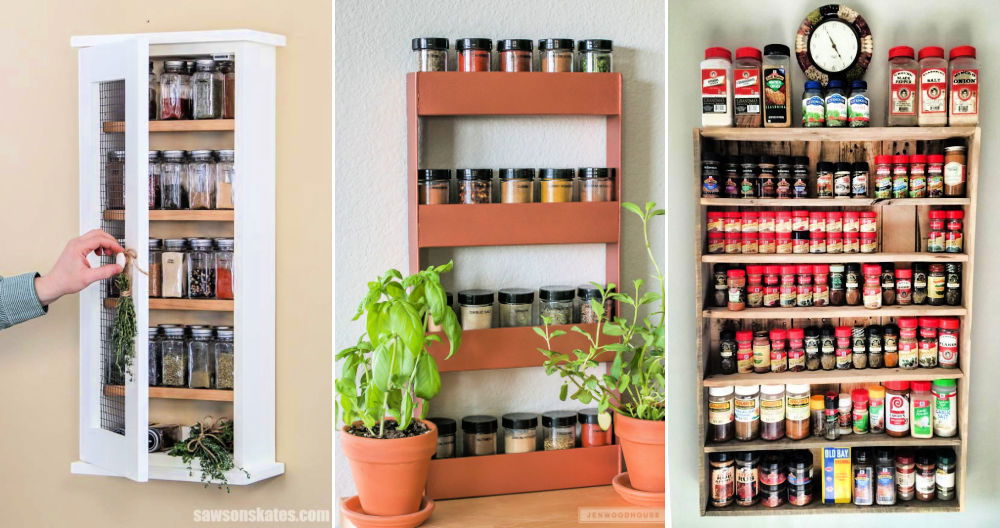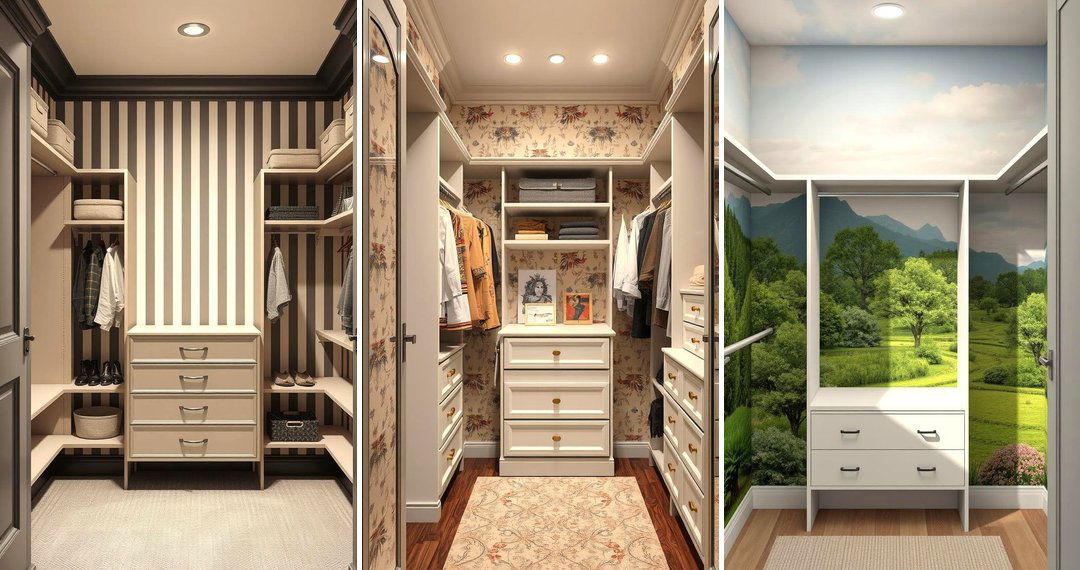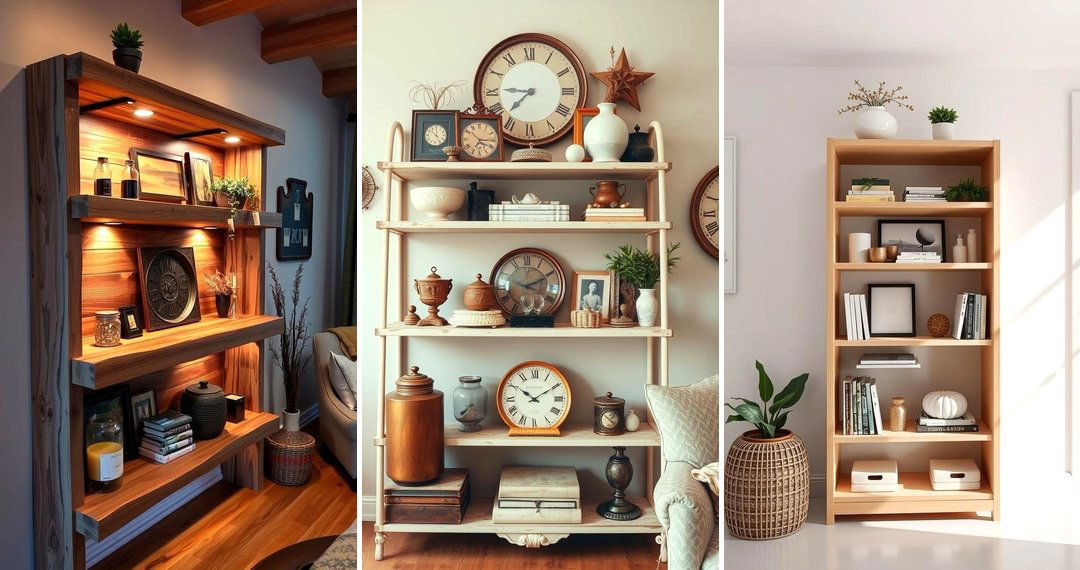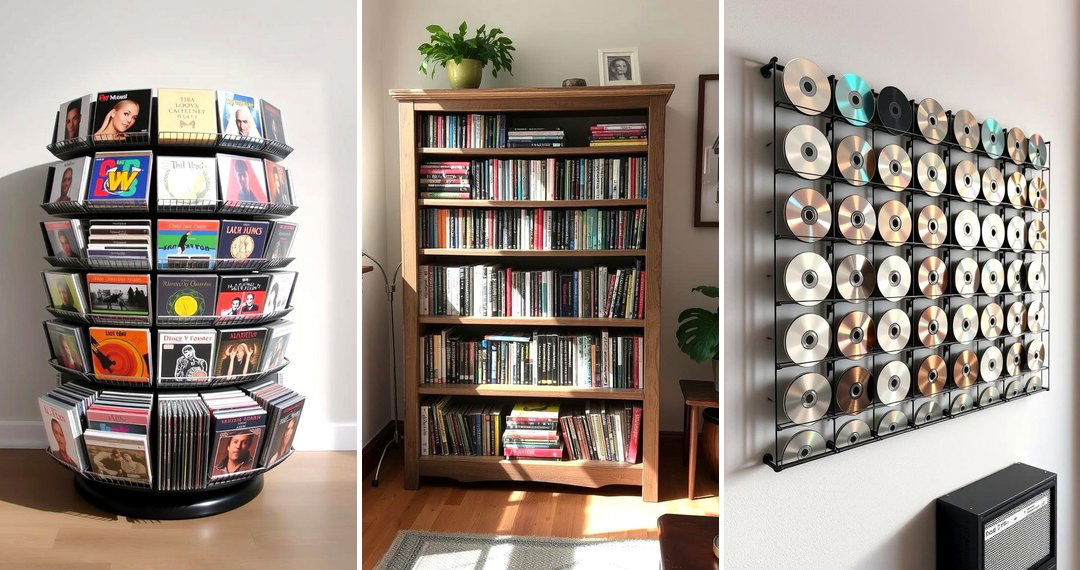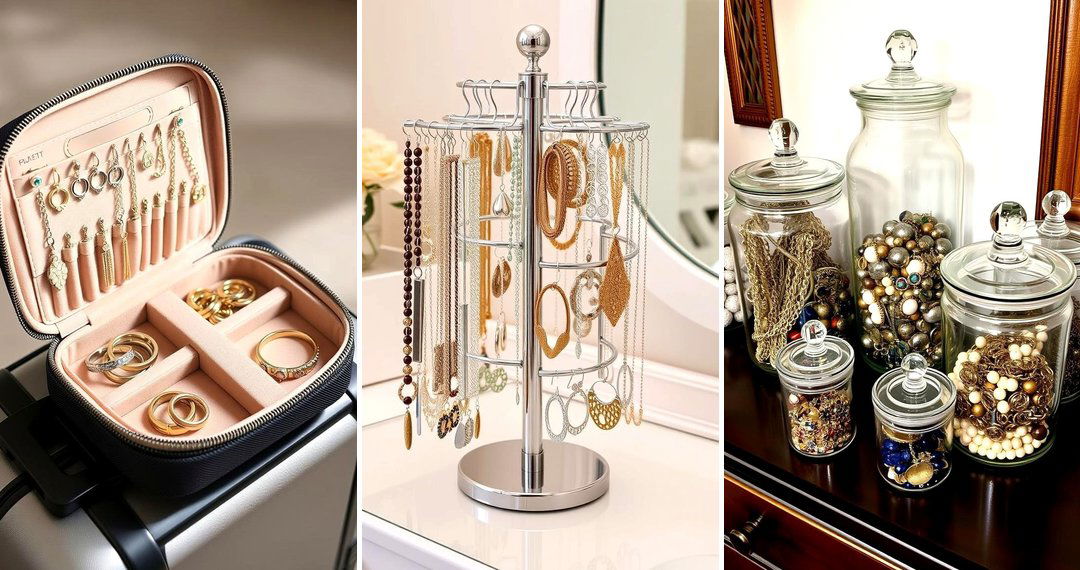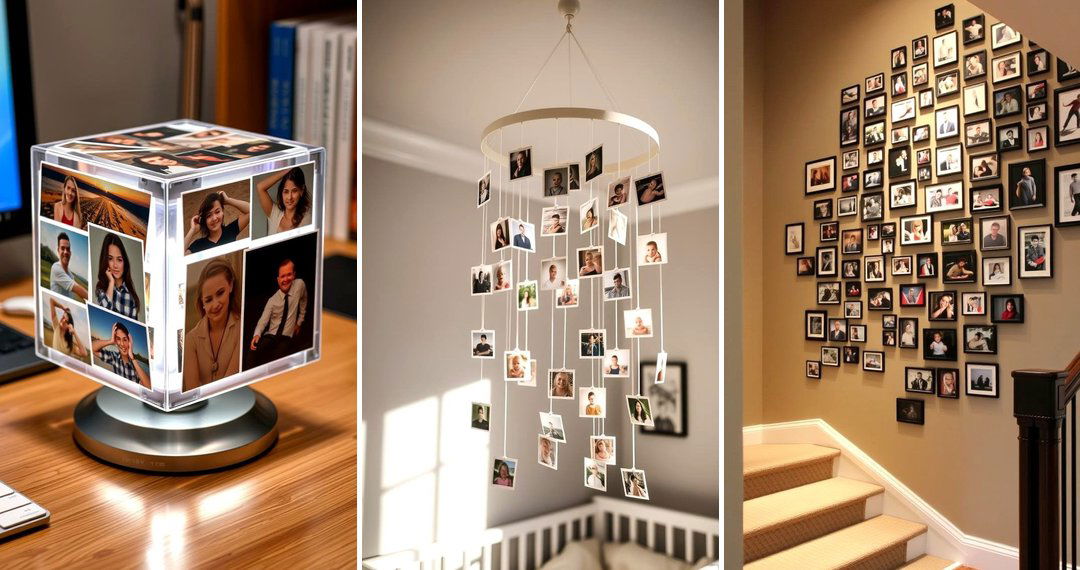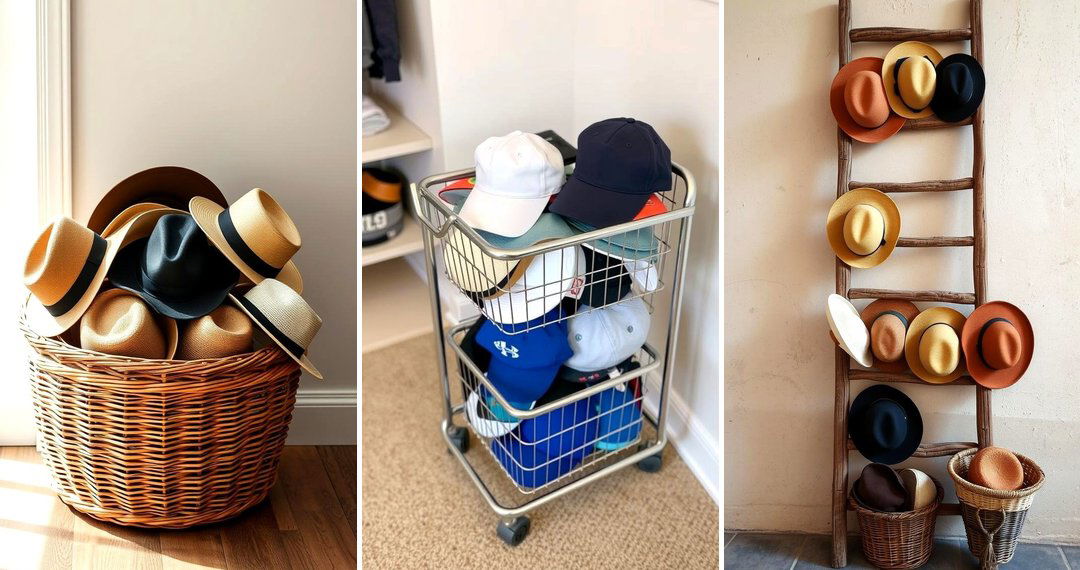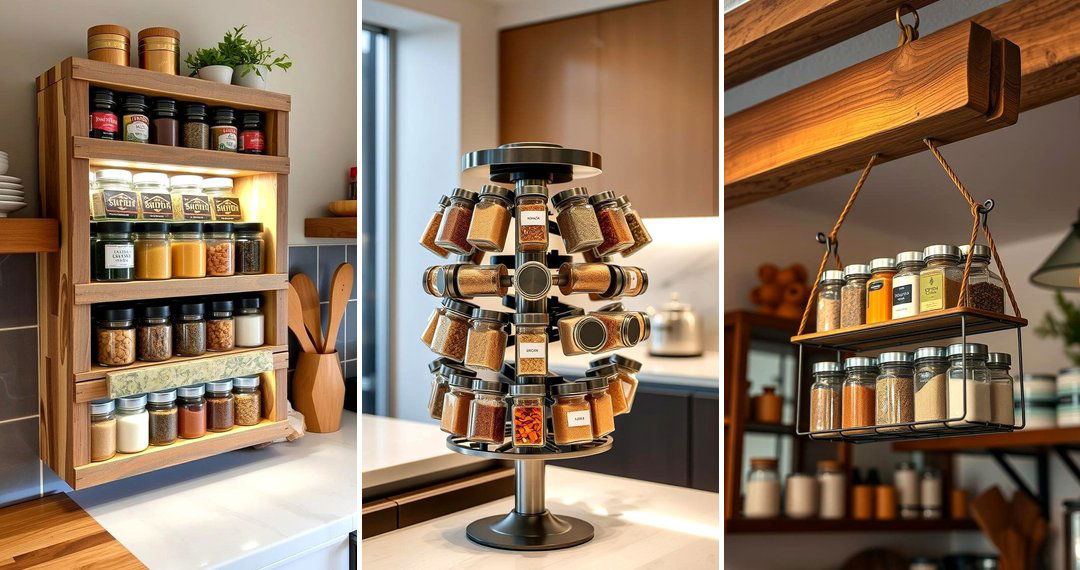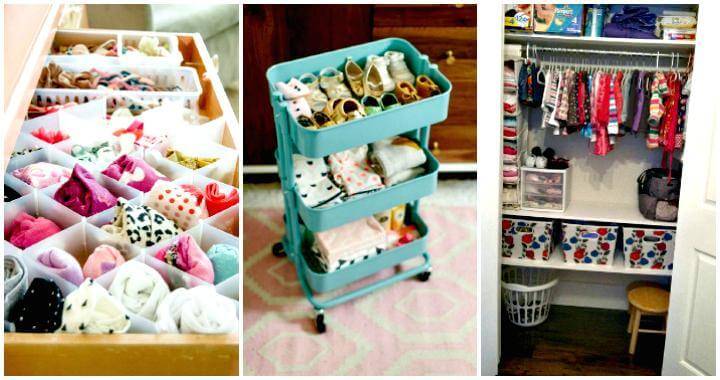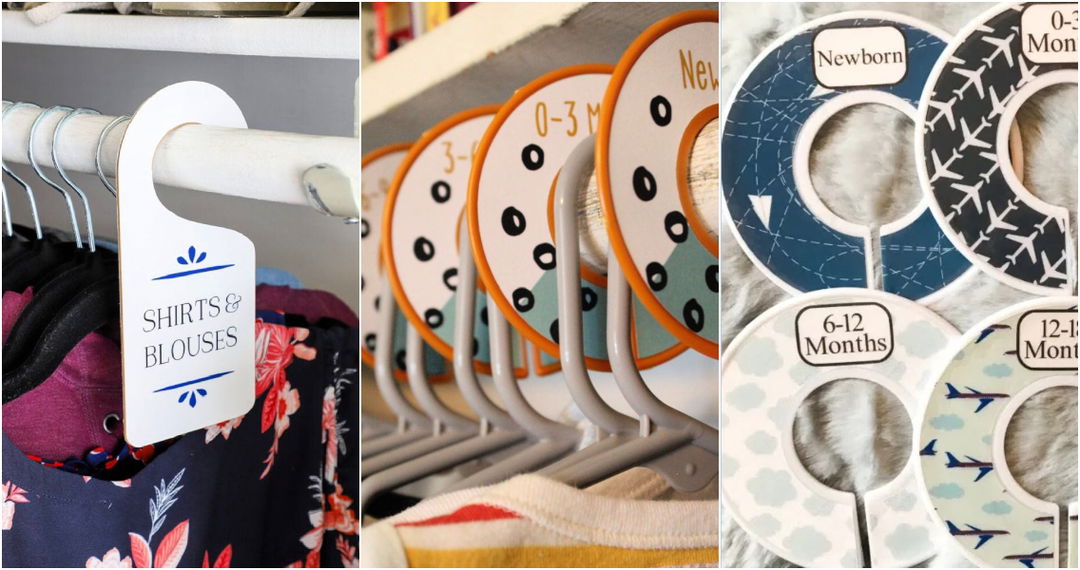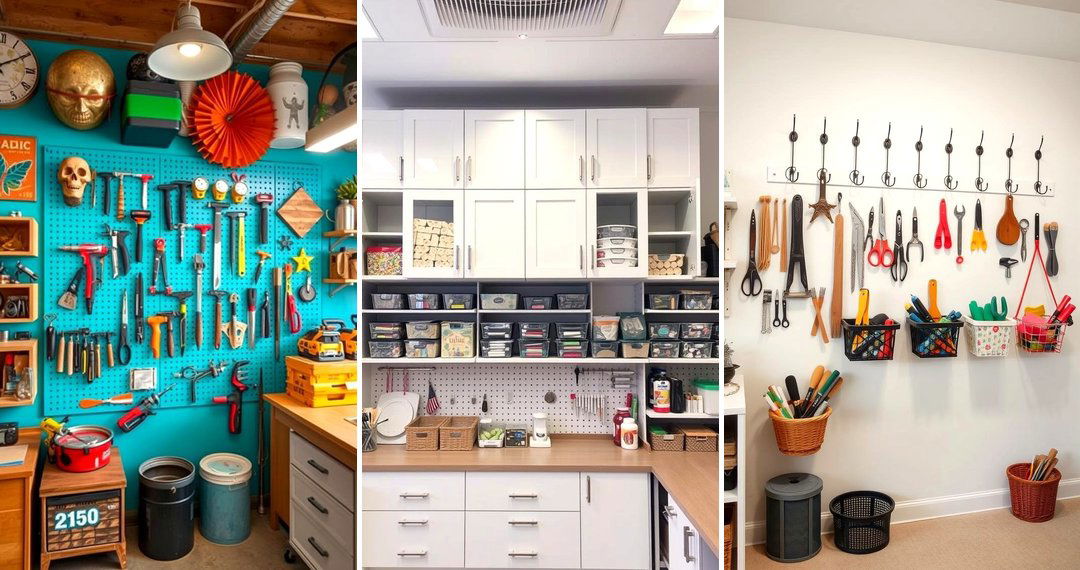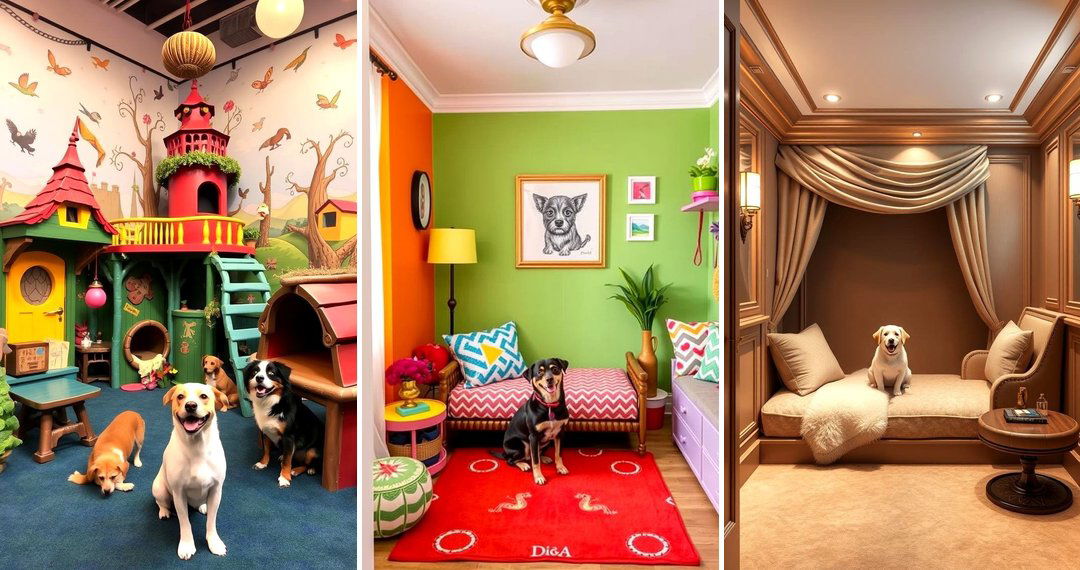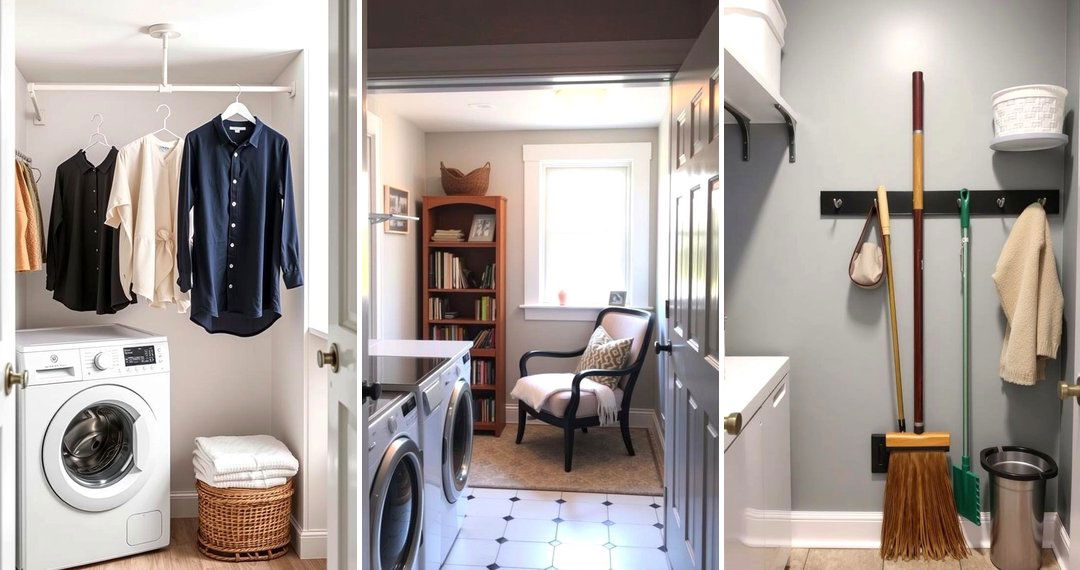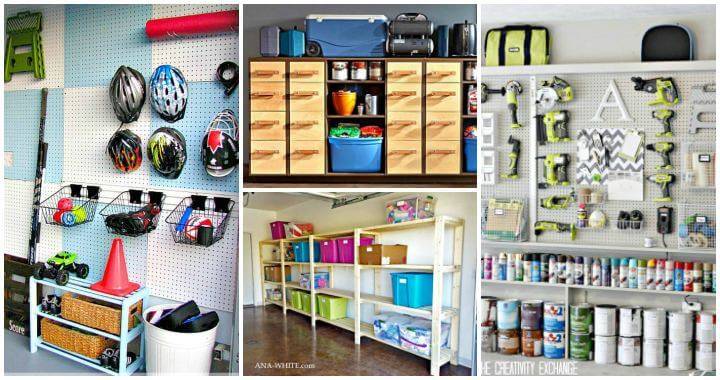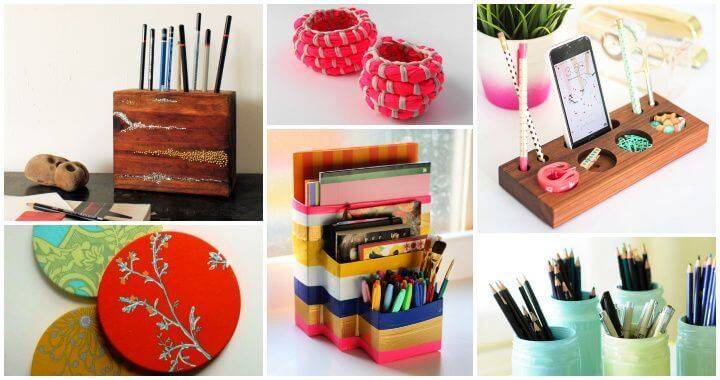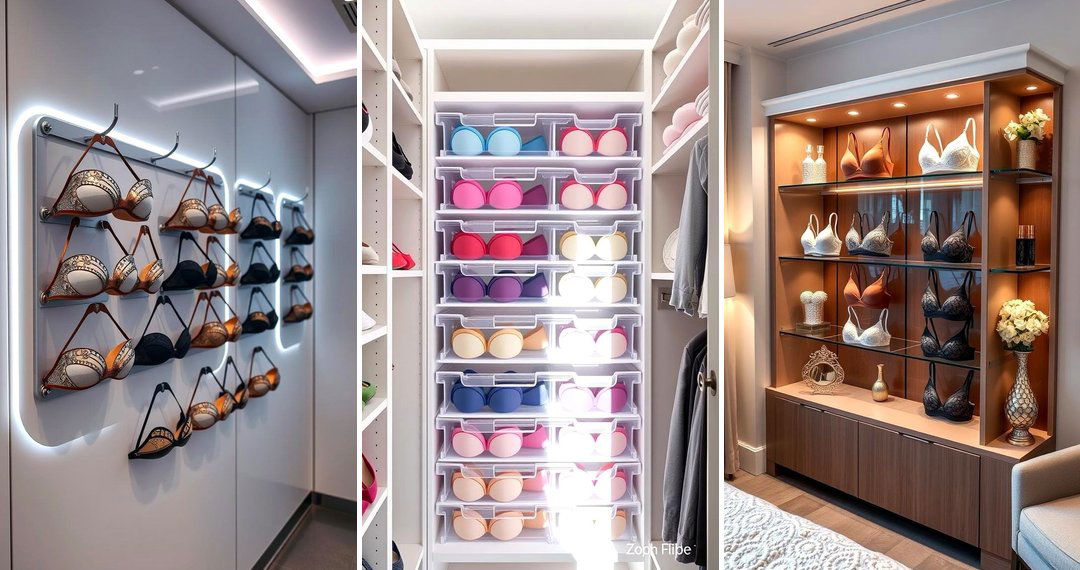Embarking on the journey of creating a dedicated sewing space can transform your crafting experience. More than just a room, it's a sanctuary where creativity blossoms and projects come to life. Designing an efficient and inspiring sewing room involves thoughtful planning and the right elements to enhance both functionality and enjoyment. Let's explore some fantastic sewing room ideas that can help you craft the perfect haven for your passion.
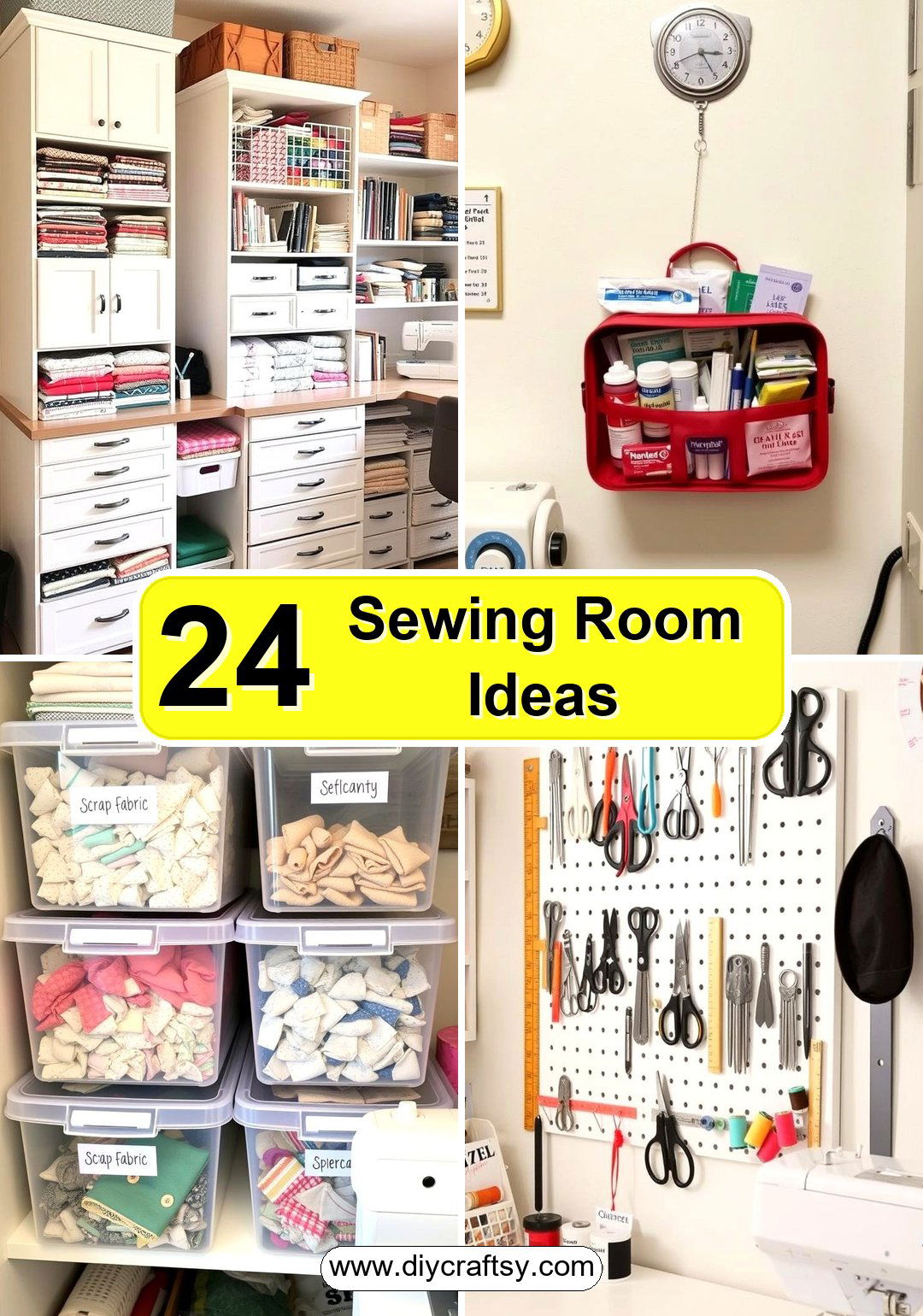
1. Dedicated Sewing Table with Adjustable Height
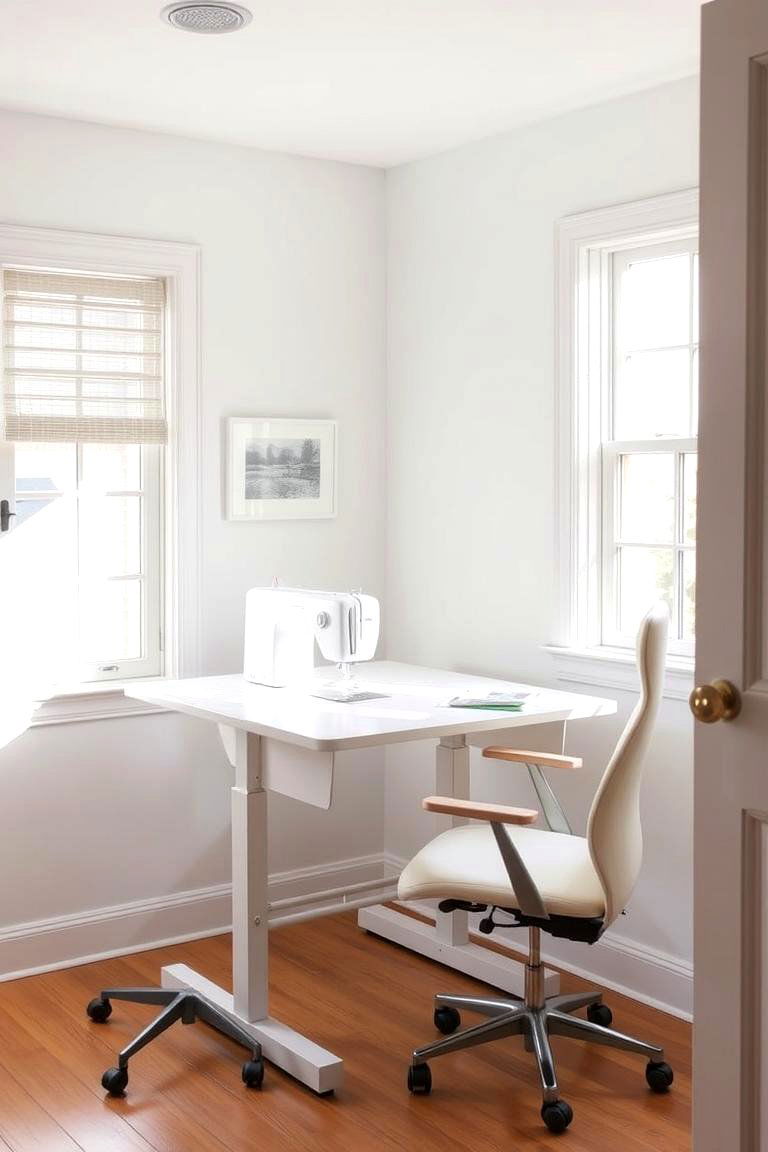
The cornerstone of any productive sewing space is a reliable work surface. Consider investing in a dedicated sewing table that offers an adjustable height feature. This adaptability allows you to switch between sitting and standing, promoting better posture and reducing fatigue during long sewing sessions. Furthermore, a sturdy table provides the stability needed for intricate work and can often include built-in storage options for frequently used tools, making it an invaluable addition to your sewing room.
2. Comfortable Ergonomic Chair
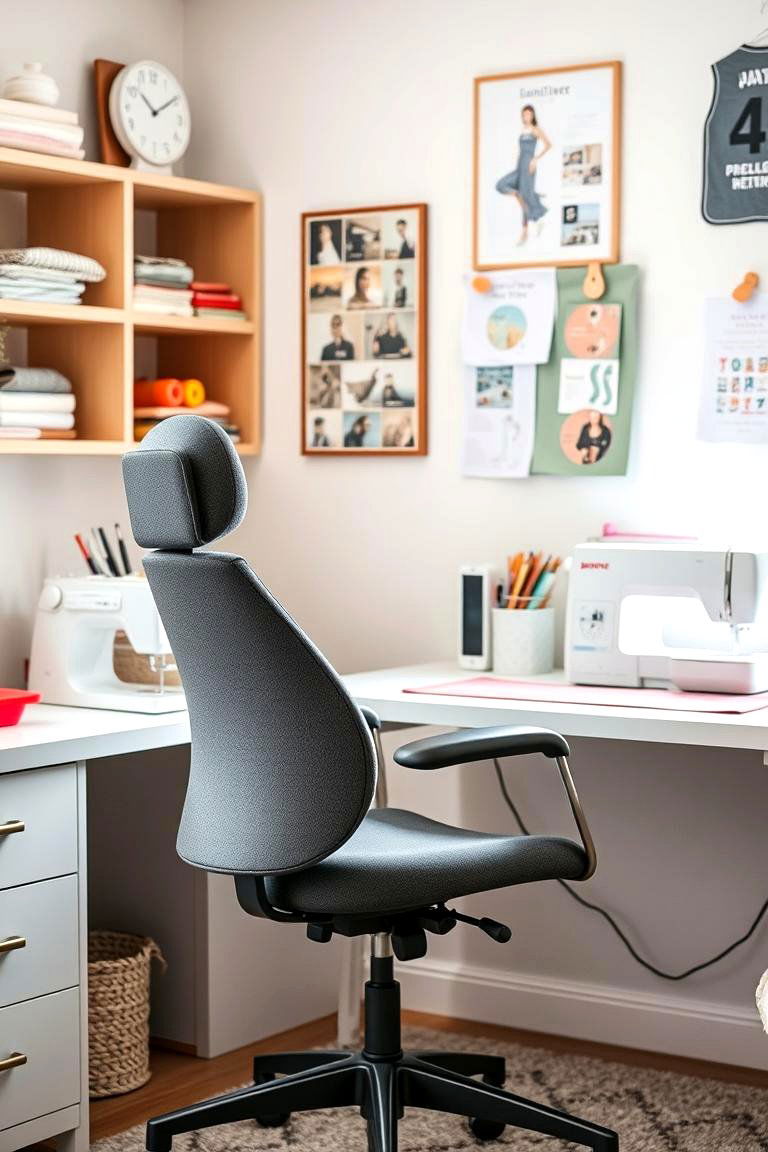
For those extended hours spent at the sewing machine, a comfortable ergonomic chair is paramount. Look for a chair with good lumbar support, adjustable height, and the ability to swivel. Features like armrests and a breathable fabric can significantly enhance your comfort, allowing you to focus on your creative projects without the distraction of physical discomfort. Investing in a quality chair is an investment in your well-being and productivity within your sewing sanctuary.
3. Ample Storage Cabinets and Drawers
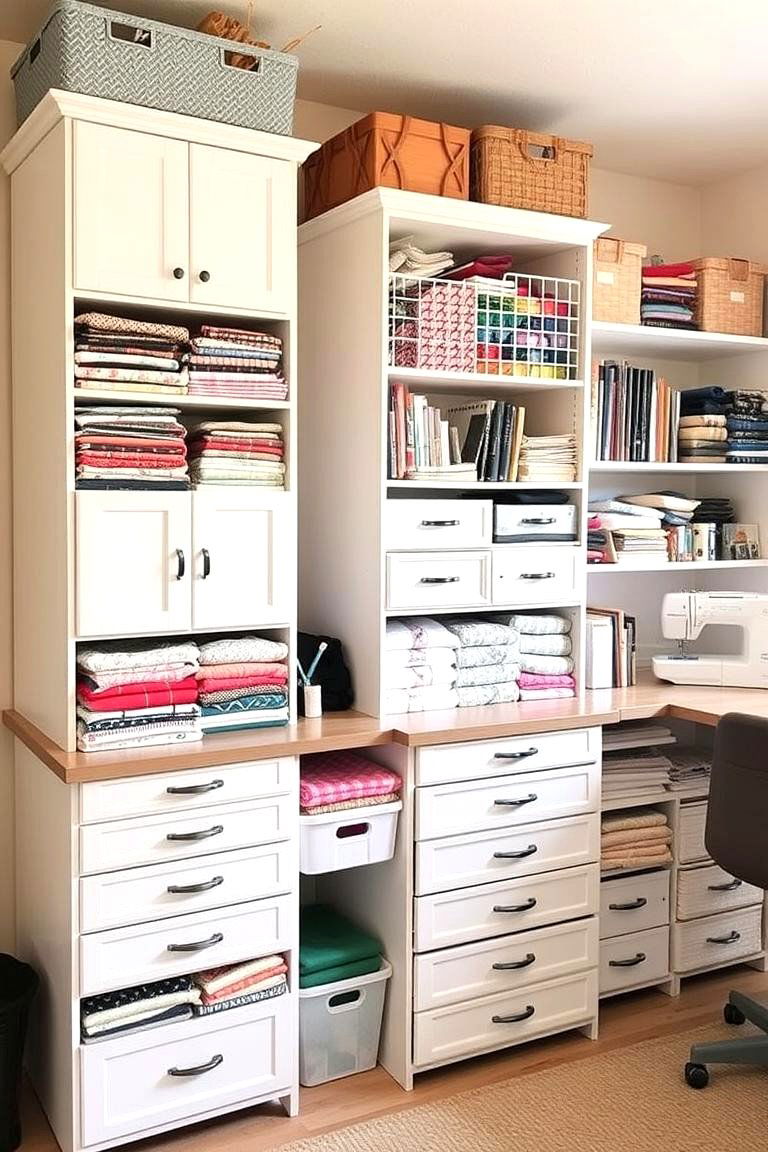
A well-organized sewing room is a happy sewing room. To keep your fabrics, notions, and works-in-progress tidy, incorporate ample storage cabinets and drawers. These closed storage solutions help to minimize clutter and protect your materials from dust and sunlight. Consider cabinets with various drawer sizes to accommodate different items, from small spools of thread to larger pieces of fabric, ensuring everything has its designated place.
4. Wall-Mounted Shelves for Fabric Display
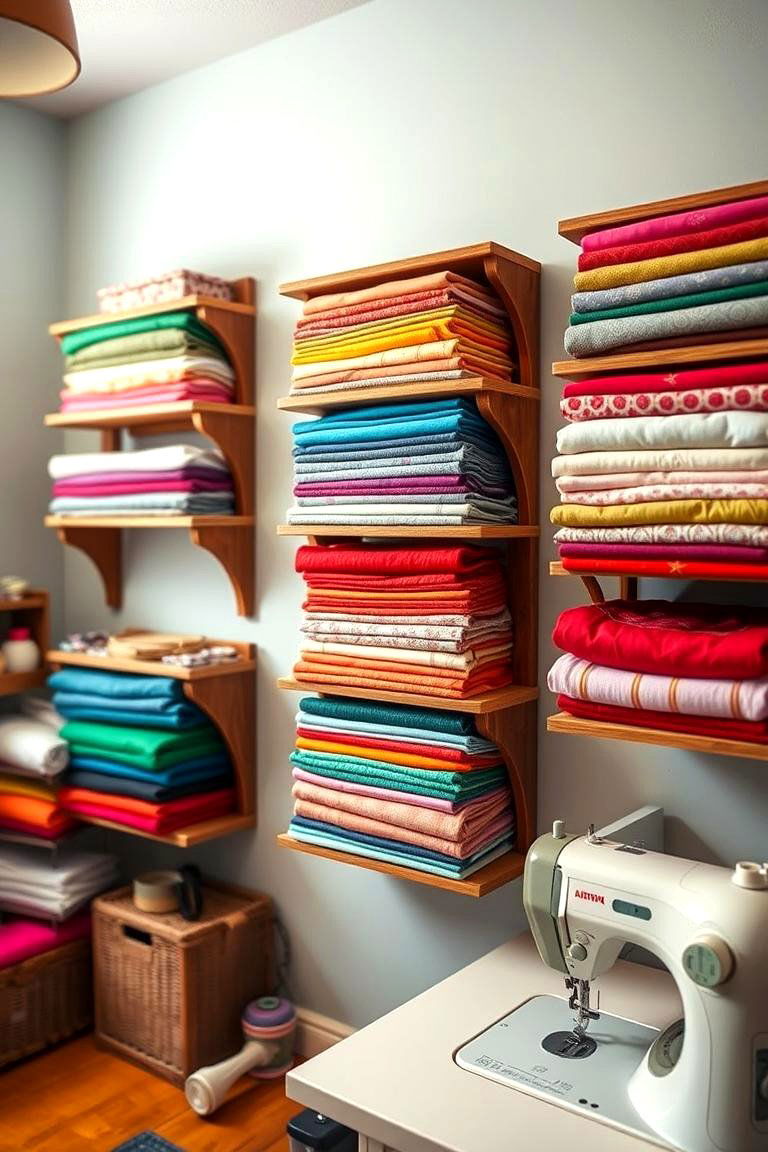
What a delightful way to showcase your beautiful fabric collection! Wall-mounted shelves not only provide valuable storage space but also turn your textiles into a visual feature. Arrange your fabrics by color, type, or project for an inspiring display that can spark new creative ideas every time you enter your sewing room. Open shelving also makes it easy to access your materials when inspiration strikes.
5. Pegboard for Tools and Accessories
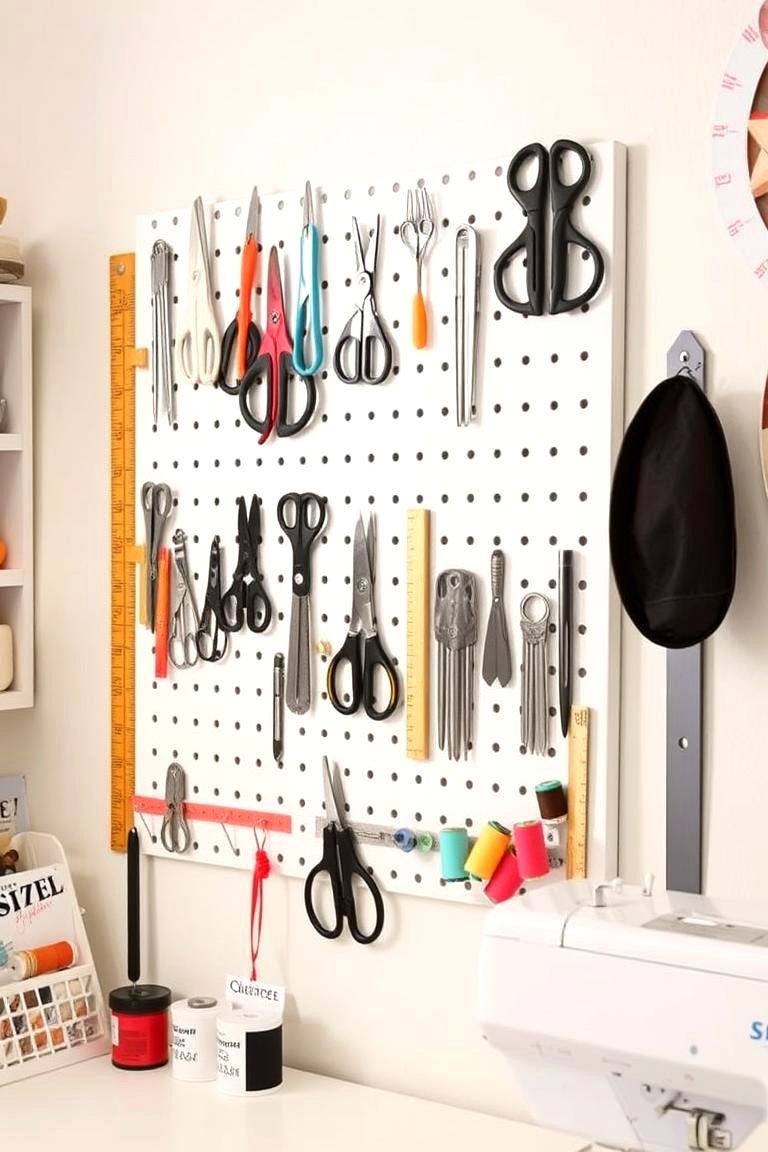
Bringing order to small tools and accessories can make a big difference in your sewing workflow. A pegboard is an incredibly versatile and affordable solution for this. By hanging frequently used items like scissors, rotary cutters, rulers, and thread snips, you keep them within easy reach and prevent them from getting lost in drawers. The flexibility of a pegboard allows you to rearrange your tools as your needs evolve.
6. Good Task Lighting (Overhead and Desk Lamp)
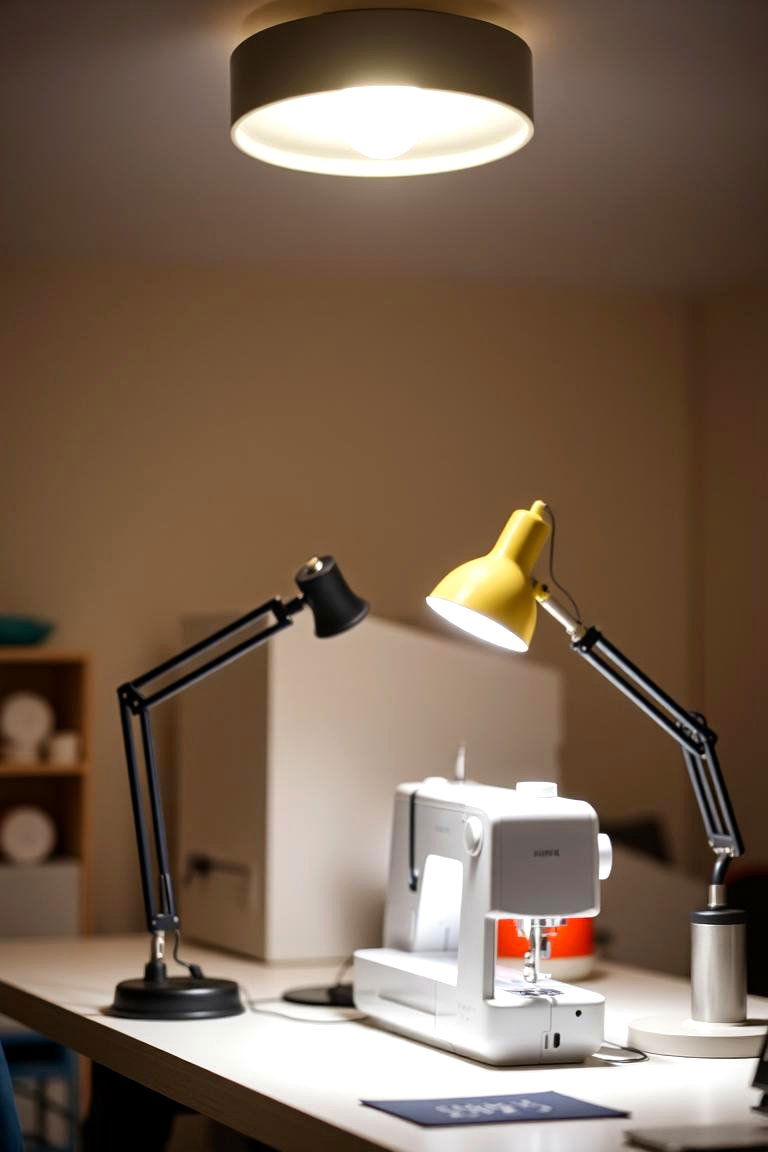
To ensure precision and prevent eye strain, adequate lighting is essential in a sewing room. Start with good overhead lighting to illuminate the entire space. Then, supplement this with a flexible desk lamp that you can position directly over your sewing machine or cutting area. Proper lighting will make intricate tasks easier and more enjoyable, allowing you to work comfortably at any time of day.
7. Cutting Mat and Rotary Cutter Station

Take the hassle out of fabric cutting by creating a dedicated station for this task. A large self-healing cutting mat placed on a sturdy surface is a must-have. Consider a small rolling cart or a designated area with storage for your rotary cutters, rulers, and other cutting tools. Having everything in one place streamlines the cutting process and helps to protect your sewing table.
8. Ironing Board and Ironing Station
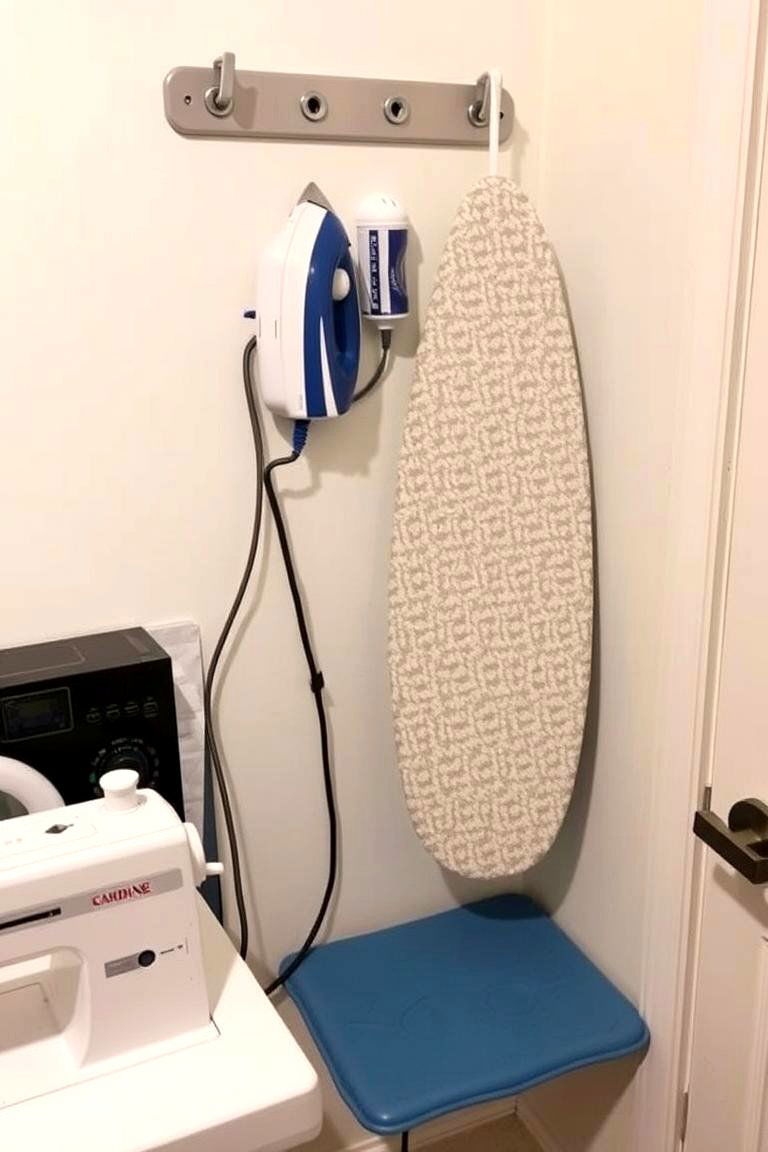
For crisp seams and professional-looking finishes, a readily accessible ironing board and iron are crucial. Set up a dedicated ironing station, ideally near your sewing machine, to make the workflow seamless. Consider a wall-mounted ironing board to save space or a portable one that can be easily stored when not in use. Keep your iron, pressing cloths, and any other ironing accessories together for convenience.
9. Thread Rack or Organizer
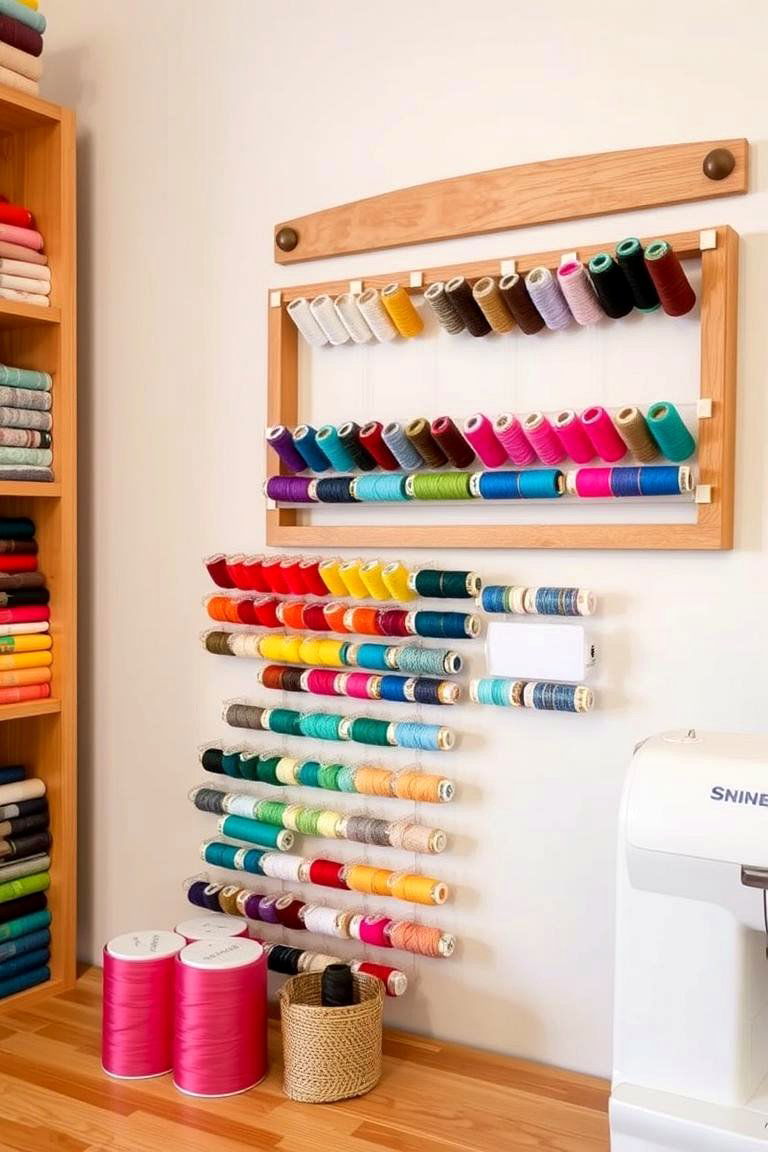
Tangled threads can be frustrating and time-consuming. Invest in a thread rack or organizer to keep your spools neatly arranged and easily accessible. Wall-mounted thread racks save valuable surface space, while tabletop organizers can be moved around as needed. Organizing your threads by color or type not only looks appealing but also makes it quicker to find the perfect match for your project.
10. Bobbin Storage Solution
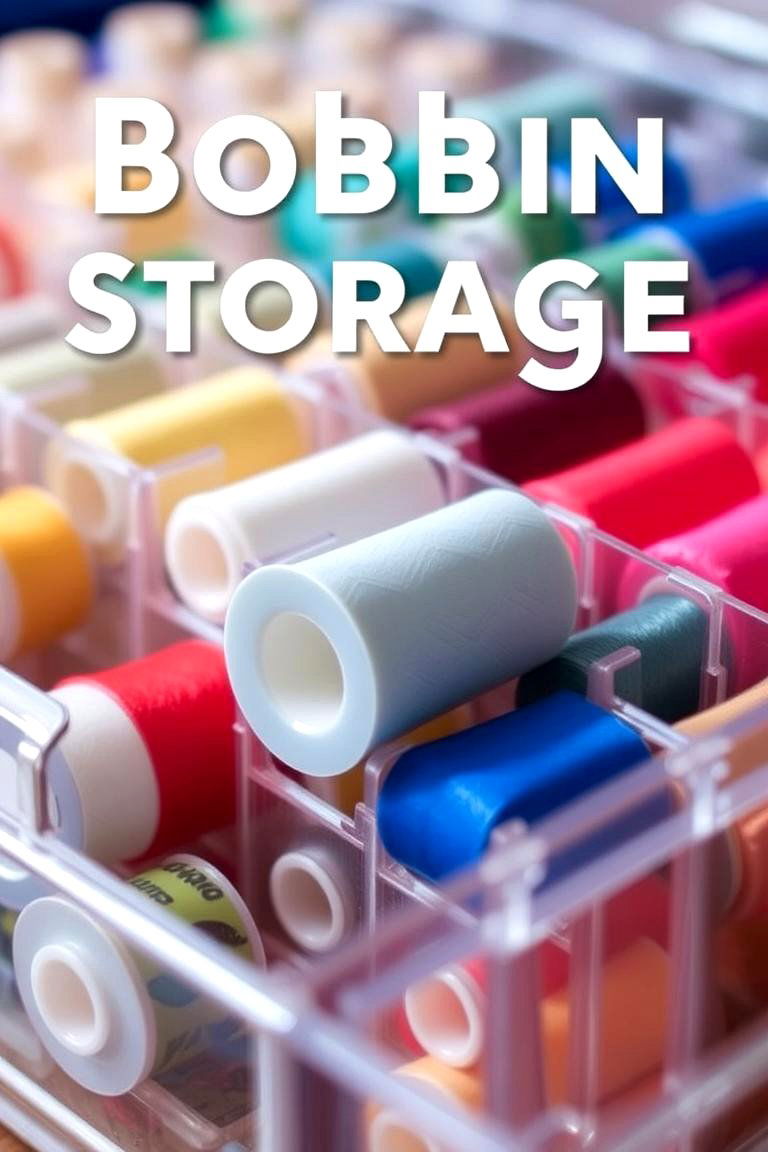
Those little bobbins can easily become a source of clutter. A dedicated bobbin storage solution will keep them paired with their corresponding thread spools and prevent them from rolling around. There are various options available, from small plastic cases to specialized bobbin holders that attach to your thread rack. Keeping your bobbins organized will save you time and frustration.
11. Pattern Storage System

Paper sewing patterns can quickly accumulate and become overwhelming if not properly organized. Implement a system for storing your patterns, such as filing them in envelopes or folders labeled by type or size. Consider using a drawer unit, a file cabinet, or even hanging them in garment bags. A well-organized pattern collection makes it easy to find the pattern you need when inspiration strikes.
12. Scrap Fabric Organization Bins
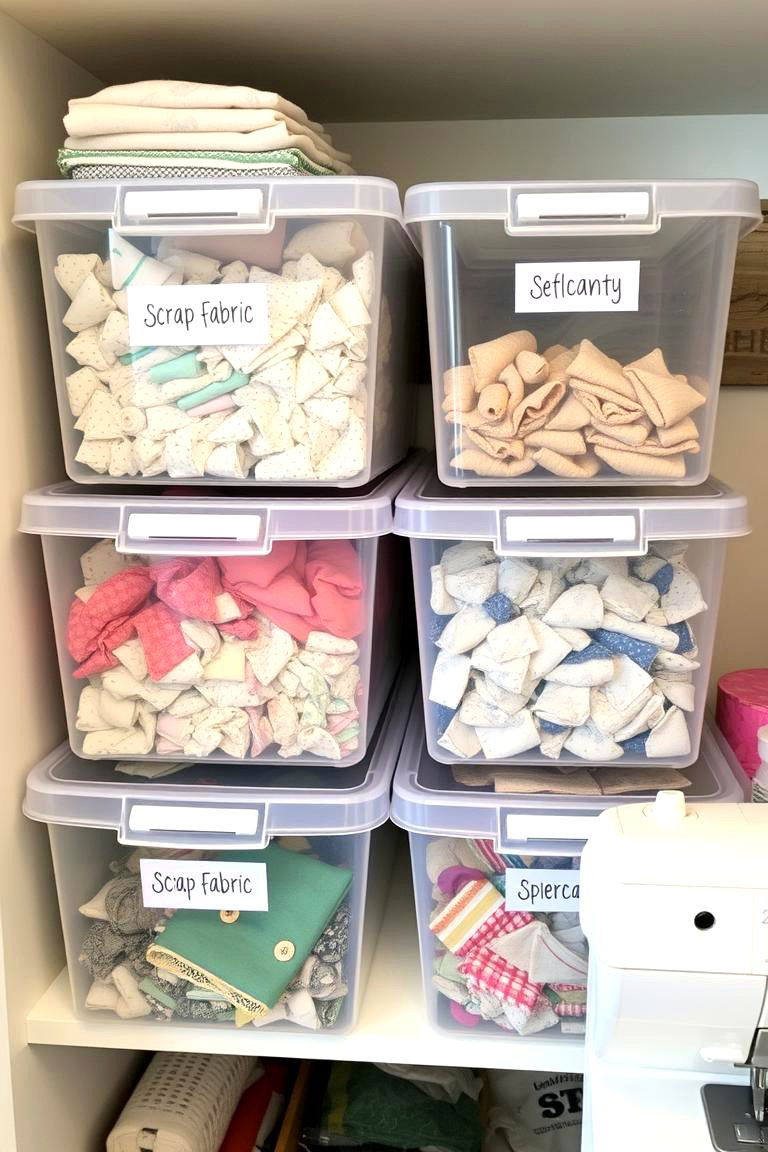
Even the smallest scraps of fabric can be useful for future projects. Keep your leftover pieces organized in designated bins or containers. Sort them by size, color, or fabric type to easily find what you need for patchwork, appliqué, or other small projects. This not only helps to reduce waste but also provides a readily available stash of materials for spontaneous creativity.
13. Design Wall for Layout and Inspiration
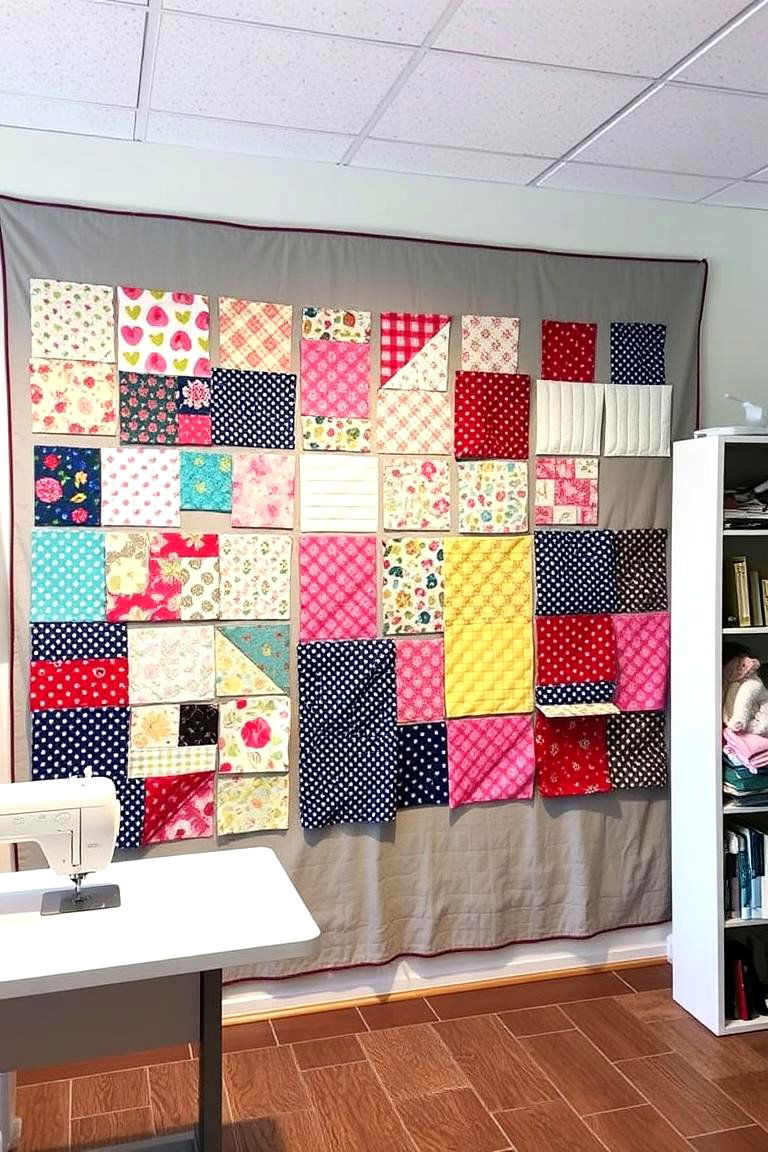
What a fantastic tool for visual learners and quilters! A design wall, made from flannel or batting stretched over a frame, allows you to arrange and rearrange fabric pieces without pinning. This is incredibly helpful for visualizing the layout of quilts, garments, or other projects before sewing them together. It also serves as an inspiring backdrop for your sewing space.
14. Full-Length Mirror
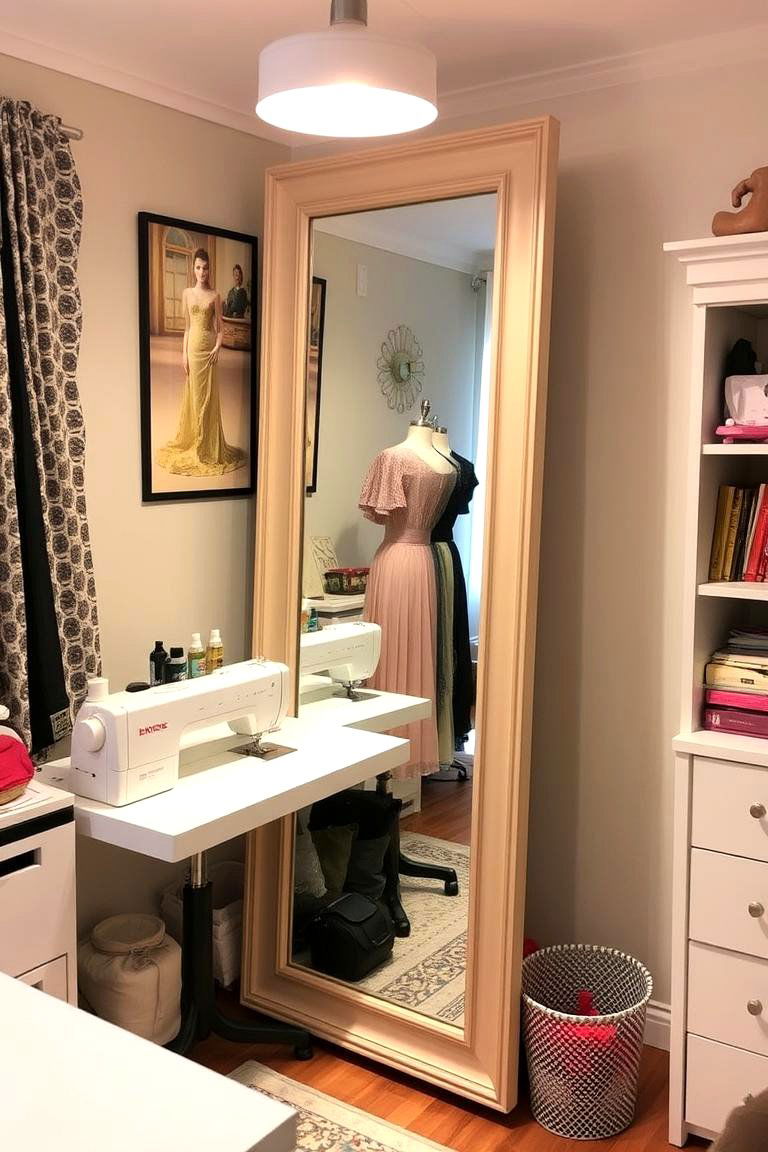
For garment makers, a full-length mirror in the sewing room is an invaluable asset. It allows you to check the fit and drape of your creations as you work on them. Being able to see the garment on yourself helps you make necessary adjustments and ensures a better final result. Position the mirror in a well-lit area of your sewing room.
15. Comfortable Seating Area (Small Sofa or Armchair)
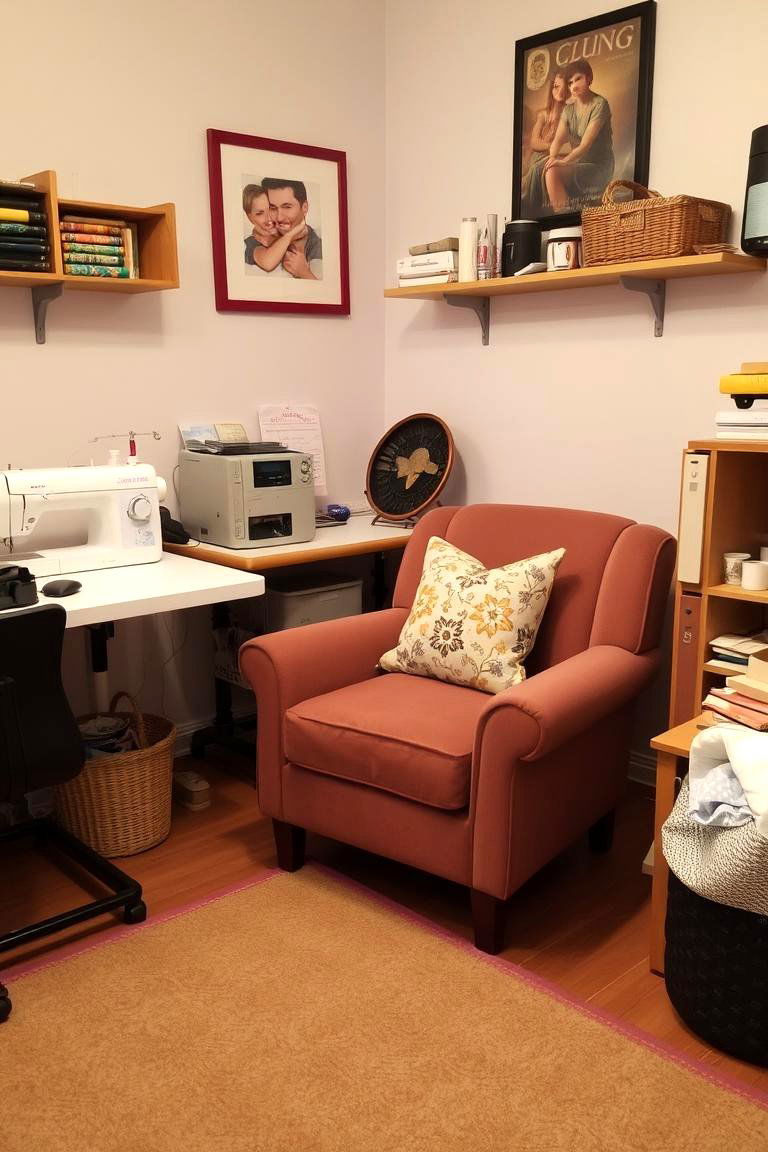
Bringing a comfortable seating area into your sewing room creates a space for relaxation, planning, or even hand-sewing projects. A small sofa or armchair provides a cozy spot to take a break from the sewing machine, flip through pattern books, or chat with fellow sewing enthusiasts. This addition makes your sewing room a more inviting and versatile space.
16. Natural Light Source (Window)
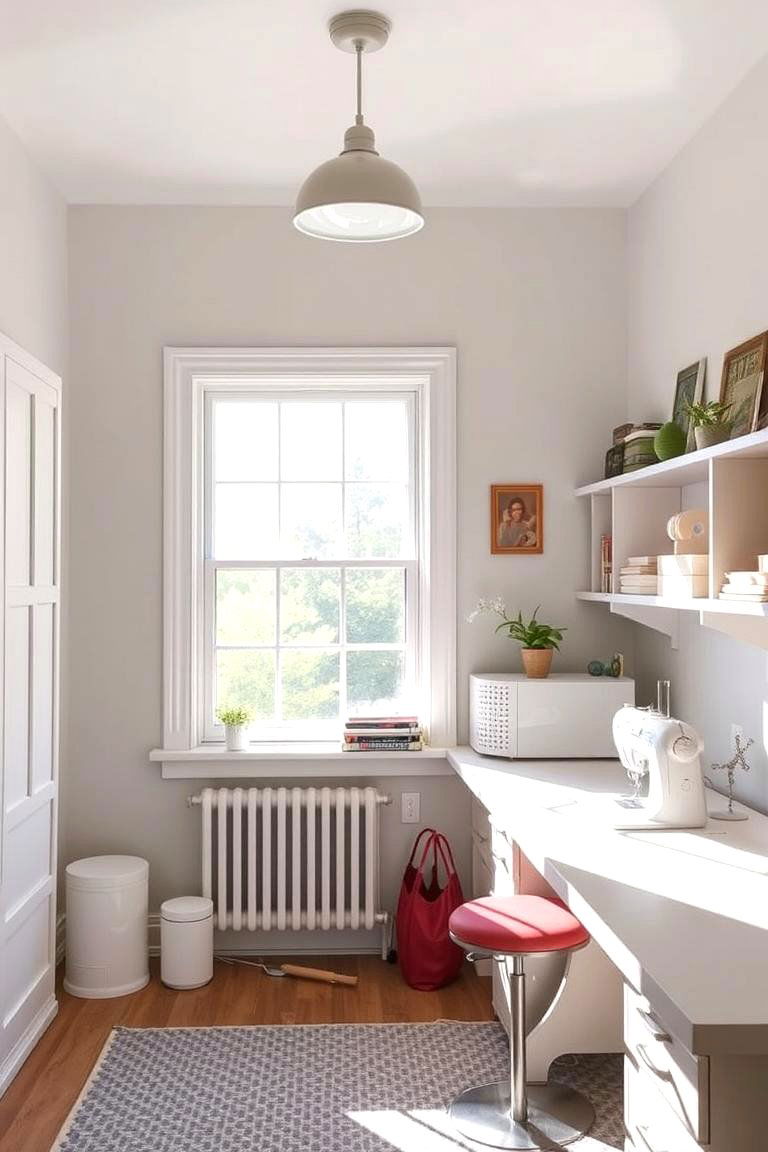
Whenever possible, position your sewing room to take advantage of natural light. A window not only provides excellent illumination for detailed work but also offers a connection to the outside world. Natural light is often the most flattering for assessing fabric colors and the progress of your projects. Consider sheer curtains or blinds to diffuse harsh sunlight.
17. Blackout Curtains for Light Control
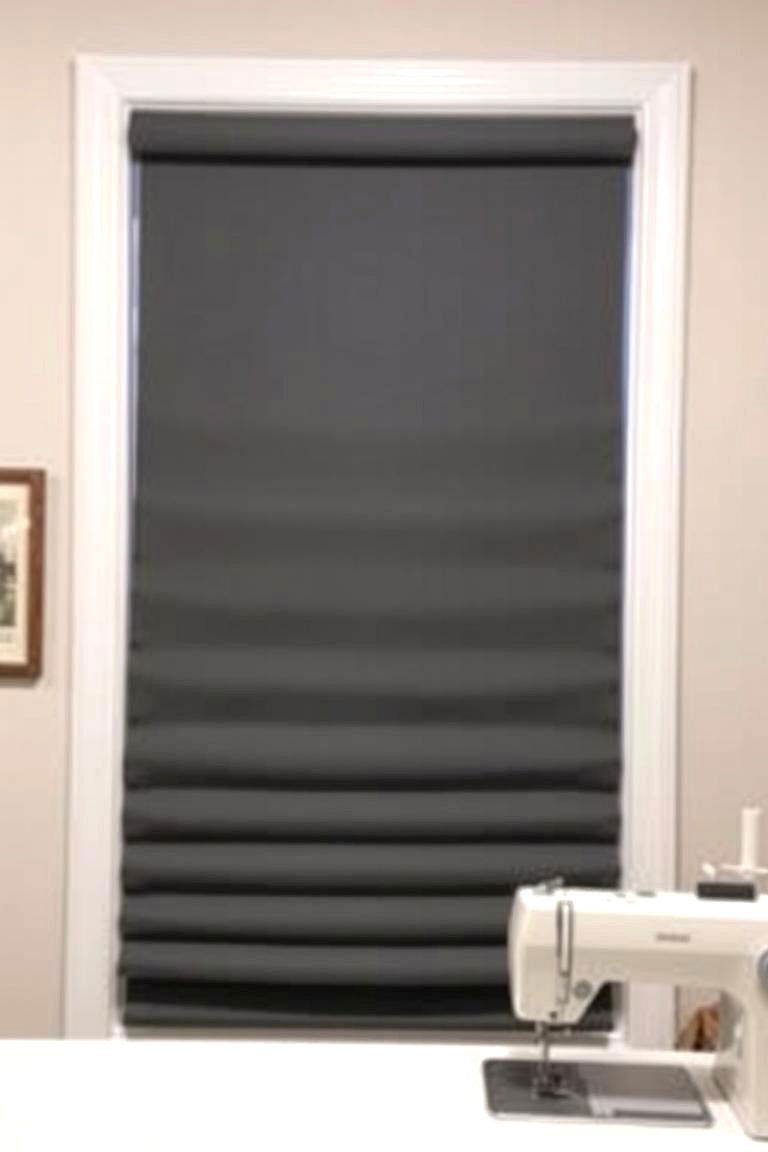
While natural light is desirable, there are times when you need to control the light in your sewing room, especially when using a projector for pattern tracing or when working on projects that require specific lighting conditions. Blackout curtains or blinds allow you to block out external light, providing optimal visibility for your tasks at any time of day.
18. Small Trash Can and Recycling Bin
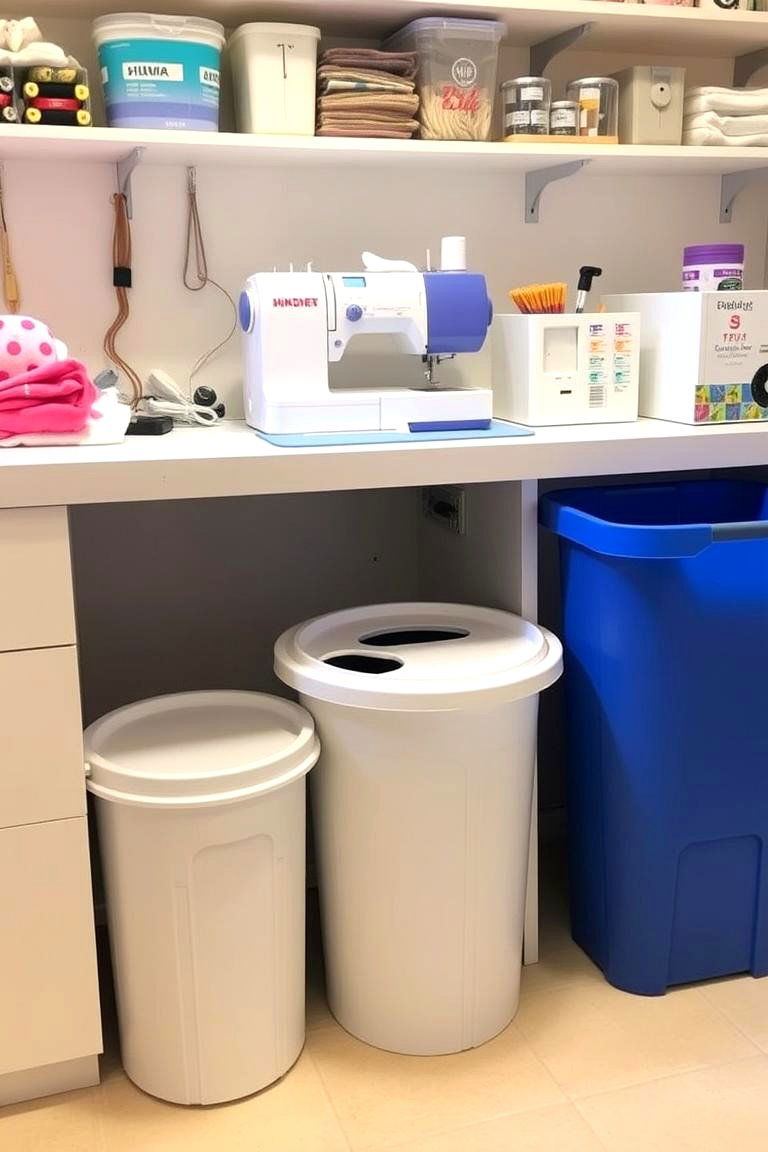
Keep your sewing space tidy by having a small trash can and a recycling bin readily accessible. Dispose of fabric scraps, thread clippings, and paper waste immediately to prevent clutter from accumulating. Having these bins within easy reach encourages good habits and helps maintain a clean and organized workspace.
19. First Aid Kit
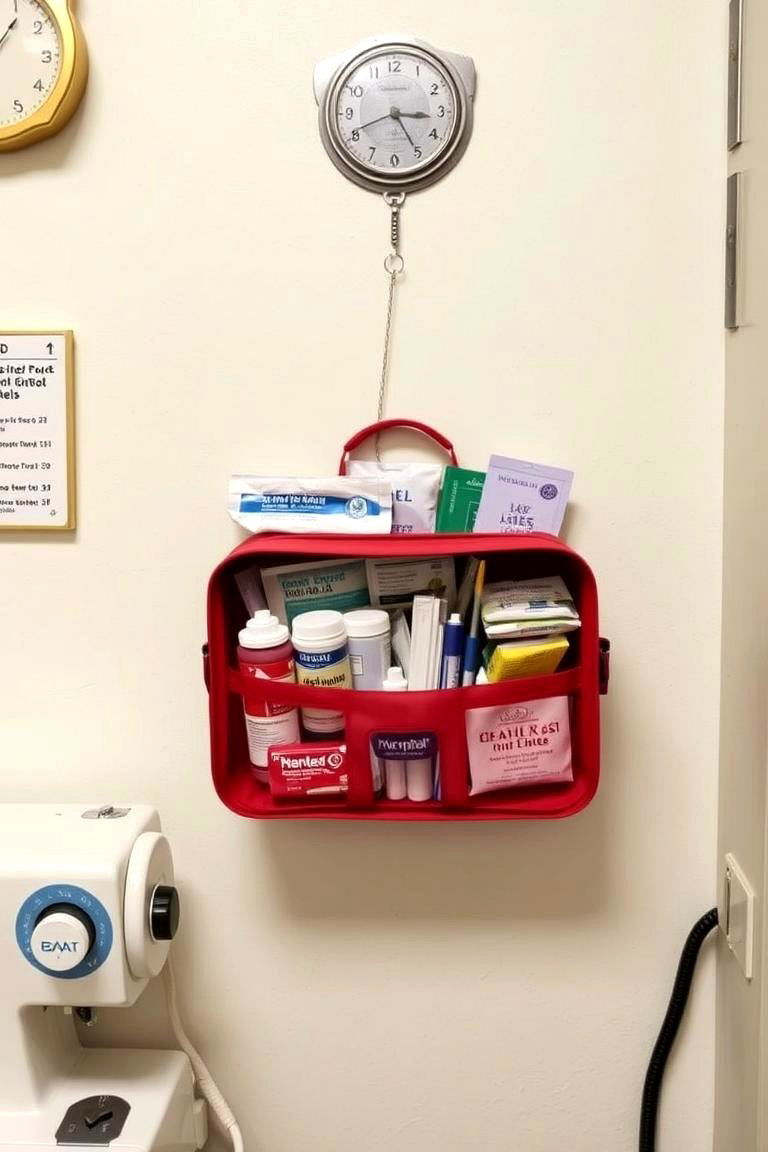
Accidents can happen, even in a sewing room. Having a basic first aid kit readily available is a smart precaution. Include essentials like bandages, antiseptic wipes, pain relievers, and any personal medications you might need. Knowing that you have a first aid kit on hand provides peace of mind and allows you to address minor injuries quickly.
20. Extension Cord and Power Strip
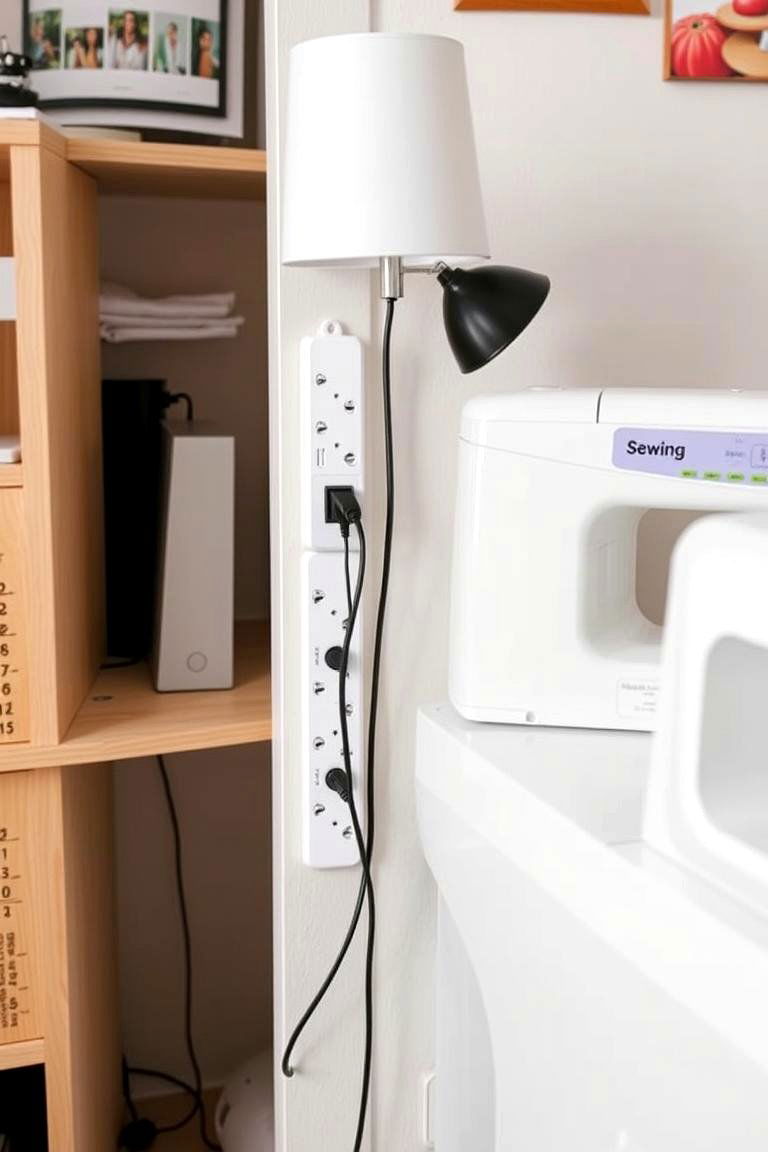
With multiple devices like sewing machines, sergers, irons, and lamps, having enough power outlets is crucial. A strategically placed extension cord or power strip can prevent tangled cords and ensure that all your equipment can be plugged in safely and conveniently. Choose a power strip with surge protection to safeguard your valuable sewing machines.
21. Portable Project Cart
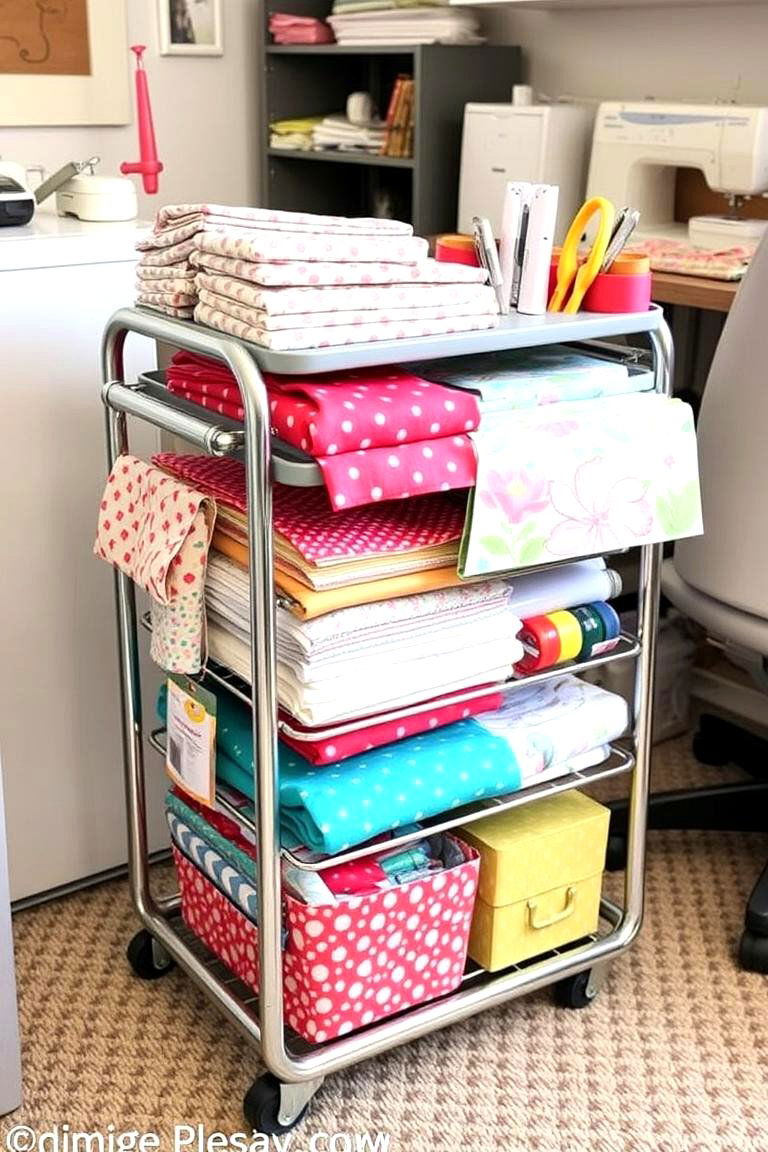
For those who work on multiple projects simultaneously or like to sew in different areas of the house, a portable project cart can be incredibly useful. This rolling cart allows you to keep all the necessary supplies for a specific project together and easily move them around as needed. It's a great way to stay organized and flexible in your sewing endeavors.
22. Inspiration Board (Corkboard or Magnetic Board)
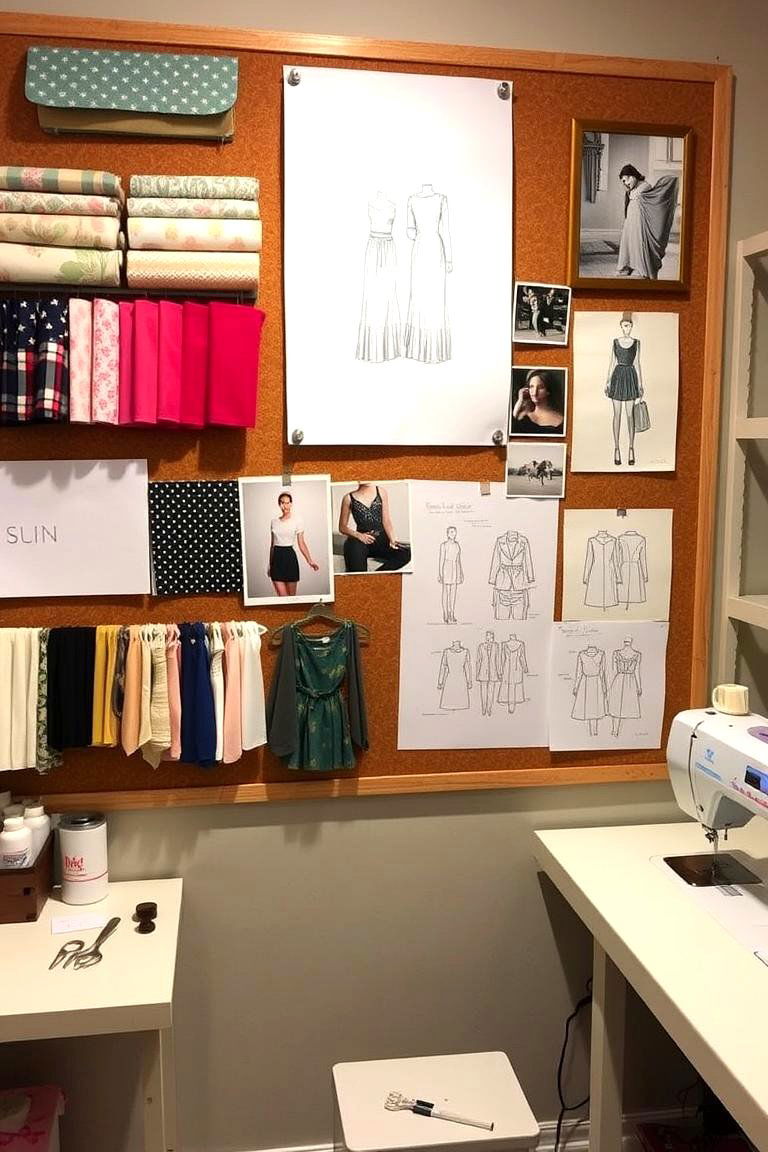
Fuel your creativity by creating an inspiration board in your sewing room. Use a corkboard or a magnetic board to display fabric swatches, pattern ideas, color palettes, inspirational images, and notes. This visual reminder of your creative goals and aspirations can keep you motivated and spark new ideas for future sewing projects.
23. Sewing Machine Maintenance Kit
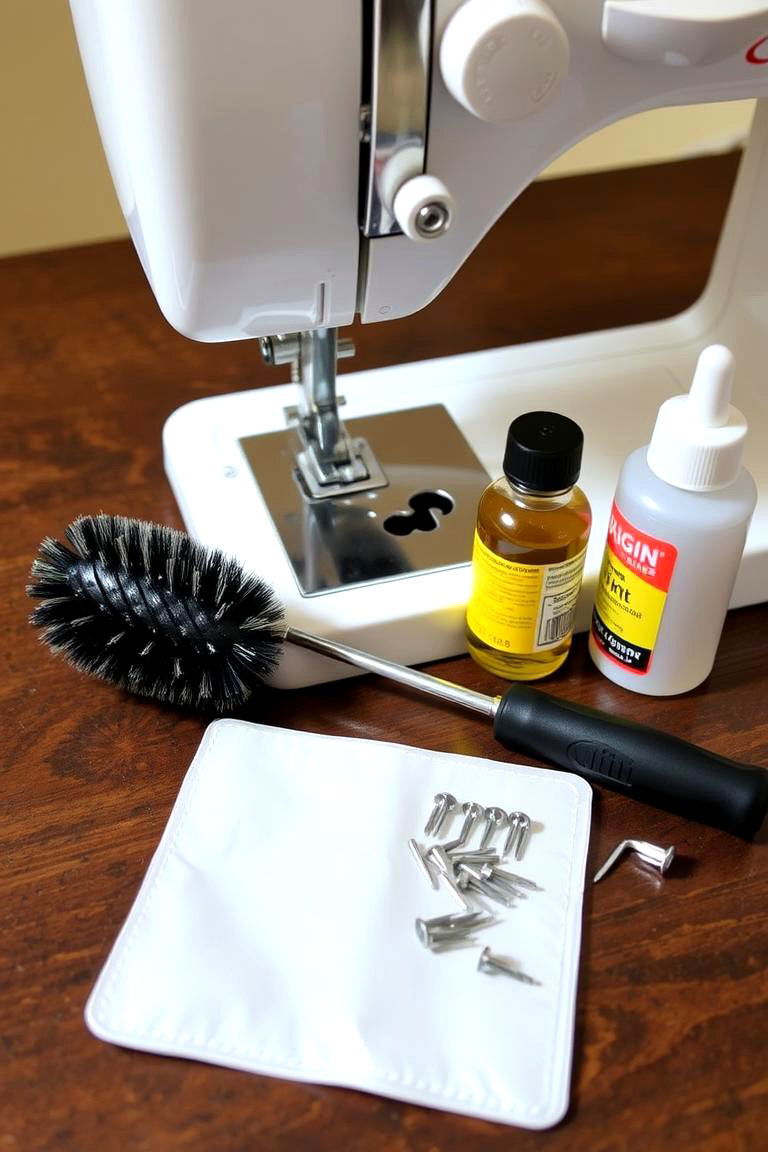
To keep your sewing machine running smoothly, it's essential to have a basic maintenance kit on hand. Include items like a lint brush, small screwdriver, sewing machine oil, and extra needles. Regular cleaning and maintenance will prolong the life of your machine and ensure optimal performance for all your sewing projects.
24. Entertainment (Radio or Small TV)
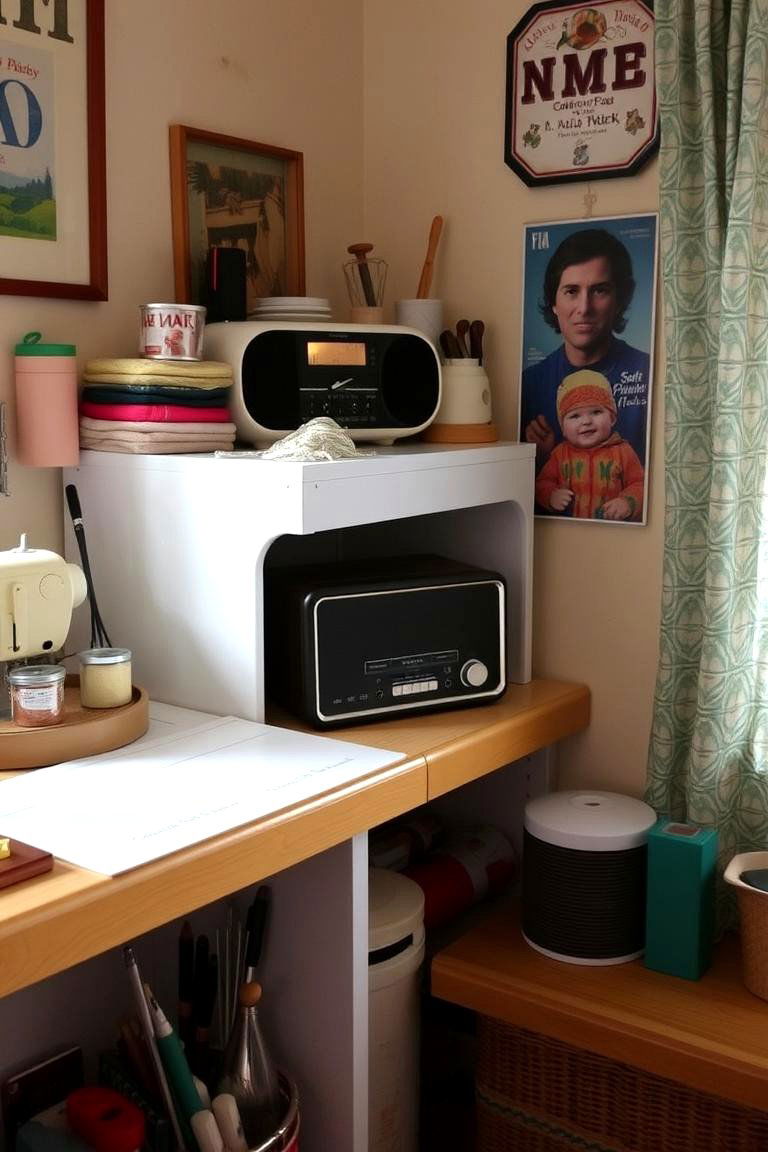
For many, sewing is a relaxing and enjoyable activity. Enhance the atmosphere of your sewing room by including some form of entertainment. A small radio or a television can provide background noise or allow you to catch up on your favorite shows while you sew. Choose something that helps you feel comfortable and inspired in your creative space.
Conclusion:
Creating the ideal sewing room is a deeply personal endeavor, tailored to your specific needs and preferences. By thoughtfully considering these 24 sewing room ideas, you can transform your space into a haven of creativity and productivity. From dedicated workspaces and ergonomic comfort to clever storage solutions and inspiring decor, each element plays a vital role in enhancing your sewing experience. Embracing these suggestions will not only streamline your projects but also ignite your passion for the craft, making every stitch a joyful and fulfilling one in your personalized sewing sanctuary.


